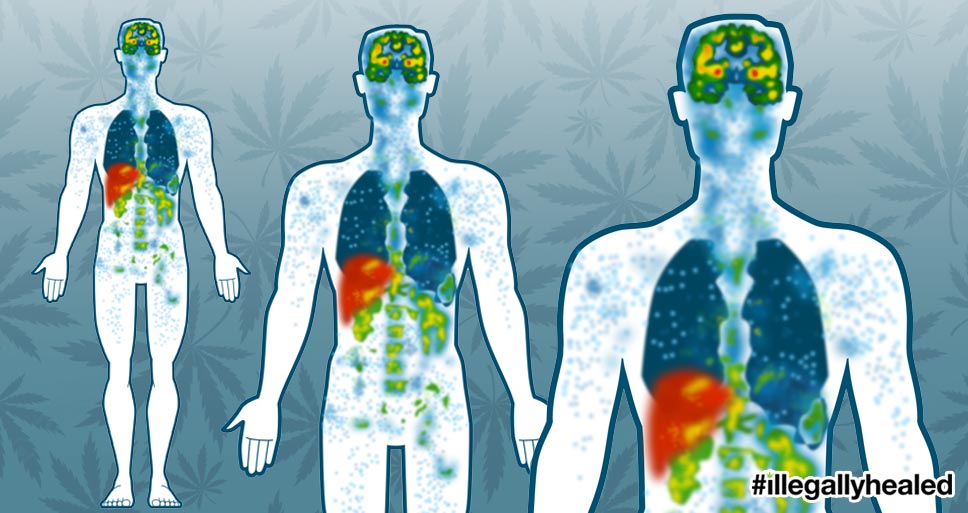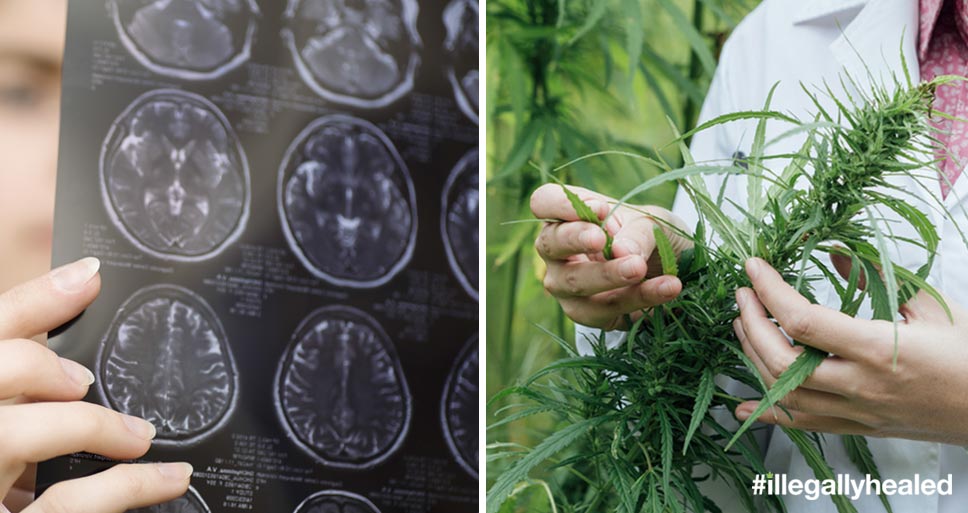How does cannabis work therapeutically? As more states vote to legalize medical cannabis, we wanted to learn more about the potential therapeutic effects of cannabis, and its most active constituents, cannabinoids.
When speaking with Dr. Dustin Sulak of Healer.com one thing becomes quickly evident: cannabis has a profound influence on the human body. Below, Dr. Sulak explains how human bodies are hard-wired for the chemical compounds found within the cannabis plant.
What kind of medical conditions are you seeing with cannabis patients?
Dr. Sulak:
At our integrative medical clinics in Maine and Massachusetts, my colleagues and I treat over 18,000 patients with a huge diversity of diseases and symptoms.

Dustin Sulak, D.O. is a licensed osteopathic physician.
In one day I might see cancer, Crohn’s disease, epilepsy, chronic pain, multiple sclerosis, insomnia, Tourette’s syndrome and eczema, just to name a few. All of these conditions have different causes, different physiologic states, and vastly different symptoms.
The patients are old and young. Some are undergoing conventional therapy. Others are on a decidedly alternative path. Yet despite their differences, almost all of my patients would agree on one point: cannabis helps their condition.
This one herb seems to affect every aspect of our bodies and minds. How is this possible? How can cannabis be so safe while offering such powerful effects?
Dr. Sulak:
The search to answer these questions has led scientists to the discovery of a previously unknown physiologic system, a central component of the health and healing of every human and almost every animal: the The endogenous cannabinoid system, also known as the endocannabinoid system or ECS.

The Human Endocannabinoid System
The ECS has three basic components: endocannabinoids, cannabinoid receptors, and hydrolytic enzymes that break down endocannabinoids. Endocannabinoids are molecules produced by cells that have activity similar to THC and the other phytocannabinoids (plant-derived cannabinoids).
So, do only humans have an endocannabinoid system?
Dr. Sulak:
Sea squirts, newts, rodents, and all vertebrate species share the endocannabinoid system as an essential part of life and adaptation to environmental changes. By comparing the genetics of cannabinoid receptors in different species, scientists estimate that the endocannabinoid system evolved in primitive animals over 600 million years ago, long before the cannabis plant evolved 34 million years ago.
Okay, just how important is the ECS?
Dr. Sulak:
The ECS is perhaps the most important physiologic system involved in establishing and maintaining human health. Endocannabinoids and their receptors are found throughout the body: in the brain, organs, connective tissues, glands, and immune cells.
“The ECS is perhaps the most important physiologic system involved in establishing and maintaining human health.” – Dustin Sulak D.O.
In each tissue, the cannabinoid system performs different tasks, but the goal is always the same: homeostasis, the maintenance of a stable internal environment despite fluctuations in the external environment. Cannabinoids promote homeostasis at every level of biological life, from the sub-cellular, to the organism, and perhaps to the community and beyond.
What can we learn from the ECS?
Dr. Sulak:
The endocannabinoid system, with its complex actions in our immune system, nervous system, and all of the body’s organs, is literally a bridge between body and mind. By understanding this system we begin to see a mechanism that explains how states of consciousness can promote health or disease.
In addition to regulating our internal and cellular homeostasis, cannabinoids can influence a person’s relationship with the external environment. Socially, the administration of cannabinoids (especially THC) can alter human behavior, often promoting sharing, humor, and creativity.
So, is there hope for a cannabis revolution?
Dr. Sulak:
As we continue to sort through the emerging science of cannabis and cannabinoids, one thing remains clear: a functional cannabinoid system is essential for health.
From embryonic implantation on the wall of our mother’s uterus, to nursing and growth, to responding to injuries, endocannabinoids help us survive in a quickly changing and increasingly hostile environment.

Photo: Ian Sane – Flickr
A body of evidence is now emerging that links endocannabinoid deficiency to a variety of diseases, including migraine, fibromyalgia, irritable bowel syndrome, and even infant colic. As I realized this, I began to wonder: can an individual enhance his/her cannabinoid system by taking supplemental cannabis? Beyond treating symptoms, beyond even curing disease, can cannabis help us prevent disease and promote health by stimulating an ancient system that is hard-wired into all of us?
I now believe the answer is yes. Research has shown that small doses of cannabinoids from cannabis can signal the body to make more endocannabinoids and build more cannabinoid receptors. This may be why many first-time cannabis users don’t feel an effect, but by their second or third time using the herb they have increased cannabinoid sensitivity and are ready to respond. More receptors increase a person’s sensitivity to cannabinoids; smaller doses have larger effects, and the individual has an enhanced baseline of endocannabinoid activity.
My clinical experience has lead me to believe that small, regular doses of cannabis might act as a tonic to our most central physiologic healing system.
RELATED: Want to learn more about how the cannabinoids in cannabis works with your brain? WatchCNN’s Chief Medical Correspondent Dr. Sanjay Gupta explain the “entourage effect.”
This article was orginaly published on Healer.com
SOURCES:
Camilleri, Michael, et al. “Cannabinoid receptor 1 gene and irritable bowel syndrome: phenotype and quantitative traits.” American Journal of Physiology-Gastrointestinal and Liver Physiology 304.5 (2013): G553-G560.
Cupini, L. M., et al. “Abnormal degradation of endocannabinoids in migrainous women.” Cephalalgia. Vol. 23. No. 7. 9600 GARSINGTON RD, OXFORD OX4 2DG, OXON, ENGLAND: BLACKWELL PUBLISHING LTD, 2003.
Cupini, L. M., et al. “Degradation of endocannabinoids in chronic migraine and medication overuse headache.” Neurobiology of disease 30.2 (2008): 186-189.
McPartland, John M. “The endocannabinoid system: an osteopathic perspective.” The Journal of the American Osteopathic Association 108.10 (2008): 586-600.
McPartland, John M., et al. “Evolutionary origins of the endocannabinoid system.” Gene 370 (2006): 64-74.
Russo, Ethan B. “Clinical endocannabinoid deficiency (CECD): can this concept explain therapeutic benefits of cannabis in migraine, fibromyalgia, irritable bowel syndrome and other treatment-resistant conditions?.” Neuro endocrinology letters 25.1-2 (2003): 31-39.
Russo, Ethan B. “Clinical Endocannabinoid Deficiency (CECD).” Neuroendocrinology Letters 29.2 (2008).
Sarchielli, Paola, et al. “Endocannabinoids in chronic migraine: CSF findings suggest a system failure.” Neuropsychopharmacology 32.6 (2007): 1384-1390.
Skrabek, Ryan Quinlan, et al. “Nabilone for the treatment of pain in fibromyalgia.” The Journal of Pain 9.2 (2008): 164-173.
Storr, M. A., et al. “The role of the endocannabinoid system in the pathophysiology and treatment of irritable bowel syndrome.” Neurogastroenterology & Motility 20.8 (2008): 857-868.


Comments 1
Pingback: This Doctor Says Our Bodies Are Hard-wired For Cannabis – #illegallyhealed | auntiebs